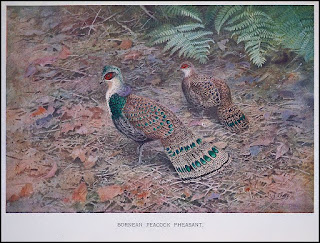
On the 16th of
February, I visited the annual World Book Fair at Pragati Maidan in New Delhi.
I have been attending it religiously for the past few years, not because I run
out of books to read (there are several tucked away in my bookshelf that I have
yet to finish for want of time), but because every year I learn something new
at the fair. Sometimes it is a book discovery, other times it is a
conversation, still other times it is a glimpse of a new culture through the
books from other countries. This time, I had just finished browsing in the
guest country Singapore’s book exhibition (bought 3 wonderful illustrated
children’s book from Singapore), and walked into a forum discussion in an
adjacent hall where a panel of intellectuals were discussing ‘Writers and
Writing History of North East India’. There were shelves on the sides lined
with relevant book though ‘for display only’. There were paintings on the walls
displaying works of artists from the northeast. On the other side were posters
containing snippets of information on the cultural icons of the northeast –
Sacred Forests, Bamboo, Tea, Hornbill Festival, Folk Dance, Textiles, etc. A
group of eager listeners were crowded around the stage perched on woven cane morahs. I found a cane chair at the back
and sat down to listen in.
One of the panellists was saying –
that literature is important for defining state identities, “an assertion of
who we are”, and also a means “for engagement with the world”. It is important that
literature reflects history, urban culture and morality. While another speaker
pointed out that among the northeastern states, Assam has the richest literary
culture, as compared to Nagaland and Arunachal Pradesh where tribal culture is
more predominant, and folklores are the means of telling stories.
This talk made me consider the
publishing scene in my own state of Himachal Pradesh. I am not a ‘literary’
type of person; I have a background of ecological sciences. Also, I come from a
region in Shimla District of Himachal Pradesh that does not have a written
script for its spoken language (there is a technical term for it), although its literacy rate is among the highest in the country. [So, most of
the story-telling here is also through folklores, though Hindu religious myths are
also used for story-telling during religious gatherings]. As far as the local literary
scene (in English) in urban Shimla is concerned, we have wonderfully researched
academic books coming out of universities and institutions, about the culture,
history, architecture, flora, fauna, folklore, fairs, etc. of the state, but we
have not yet incorporated these elements in popular fiction. A few local
authors have published books on history of the region, there is a reprinted
book on birds of Shimla and one on the heritage walks of the city, there is
also at least one anthology. Local children’s literature is virtually
non-existent. Ghost stories and tales of man-eating leopards pass off as
popular children’s fare.
So, I am really looking forward
to read an urban ‘eco-inclusive’ novel (or a collection of short stories) from
the state that incorporates elements such as the devdars, the rhododendrons,
the orchids, the pheasants, the cicadas, the streams, the local fairs, the
weaves, the blue magpies and the ravens, among other things. ‘Eco-inclusive’ is
a term I have coined here to express my disappointment about the total absence
of ecological elements in the commentary in much of the outputs from urban/sub-urban areas in
India, there is an absence of nature as an element of urban identity. Perhaps it reflects
the alienation of the city dwellers from nature. Perhaps it reflects a lack of
awareness about nature or the significance of it. It seems that the ecological
environment is not as big a part of literature studies as is
philosophy, culture, psychology and history. This is something we need to
change, and hopefully we will see a positive shift in the trend in the coming years. It was nice to talk to one of the panellists after the discussion.
Some of books exhibited in the
hall that I found interesting -
-The Brahmaputra by Arup Kumar Dutta,
published by National Book Trust, New Delhi.
-Emerging Literatures from North East india,
Edited by Margaret Ch. Zama, published by Sage.
-The Oxford Anthology of Writings from the
North East India, Edited by Tilottoma Misra, and













